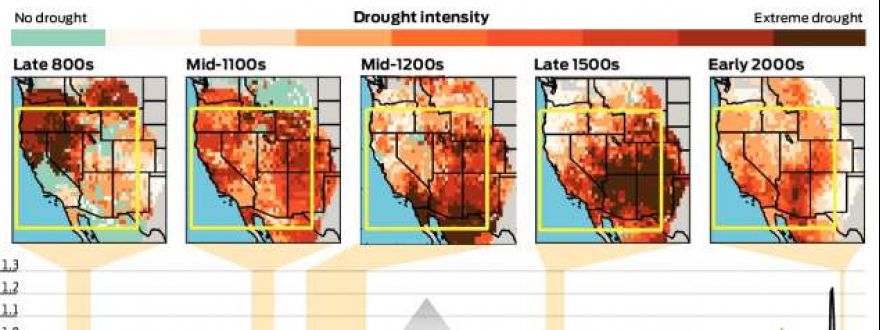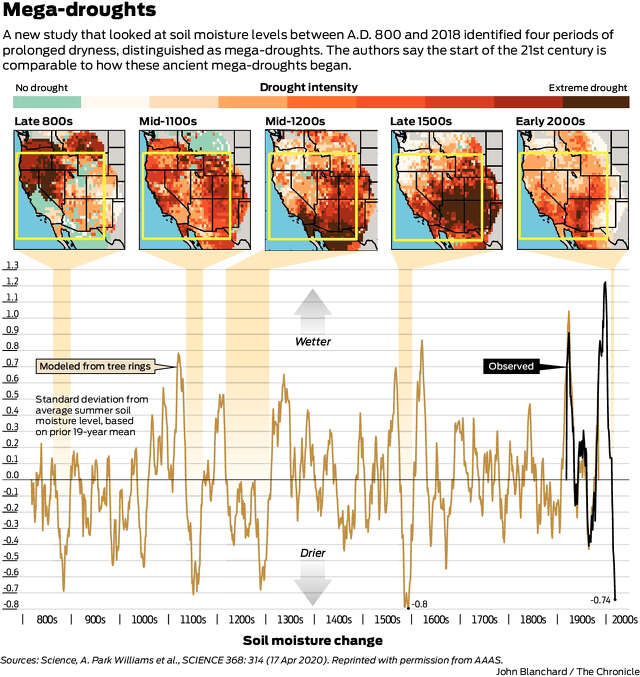
California’s crushing five-year drought came to a welcome end after record rain three winters ago. Or did it?
Although forests are greener, reservoirs are fuller and widespread water restrictions are gone, many believe the past few years, in which there was pretty decent rainfall, were just a blip on a troubling long-term skid into drier times.
A group of scientists now says that the American West, including California, has been in the midst of a prolonged drought since the beginning of the century — one on par with only four mega-droughts experienced over the past 1,200 years and one capable of causing major social upheaval.

The last mega-drought that the researchers describe, between 1575 and 1593, is believed to have forced Native Americans to relocate whole communities from sprawling mesas to lower river valleys in search of water. The mega-drought before that, in the 1200s, is thought to have contributed to the fall of the cliff-dwelling Anasazi civilization in the Southwest.
“The past two decades look a lot like how the biggest mega-droughts of the past millennium developed,” said Park Williams, bioclimatologist at Columbia University’s Lamont-Doherty Earth Observatory and lead author of the study published Thursday in the journal Science. “These mega-droughts are not like anything we’ve seen in recent centuries. They’re viewed as mythical beasts. There’s nothing that’s come even close to them.”
The fear is that if current dry times continue, which the paper’s authors say is more likely than not, the modern era soon will be in the grip of its first mega-drought.
Though society is better equipped to handle a sustained period of dryness, Williams said, with dams and other technologies to boost water supplies and massive delivery systems to share water, there are also more people and more demand today.
Big cities are poised to face water shortages, farms may be unable to plant crops, forests will brown up and be susceptible to pests, and the risk of wildfire will grow.
Read the rest of the article from San Francisco Chronicle here.





